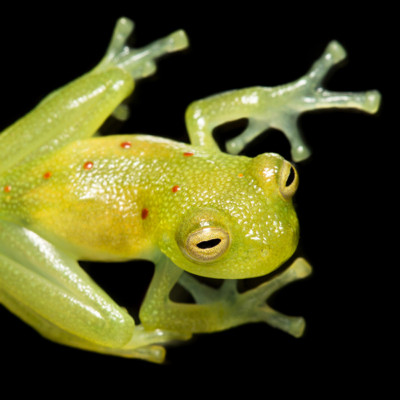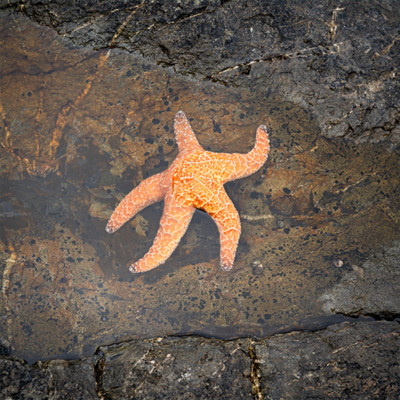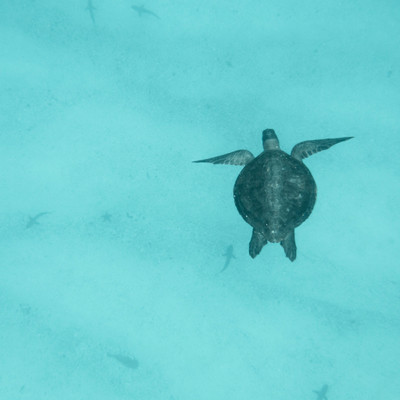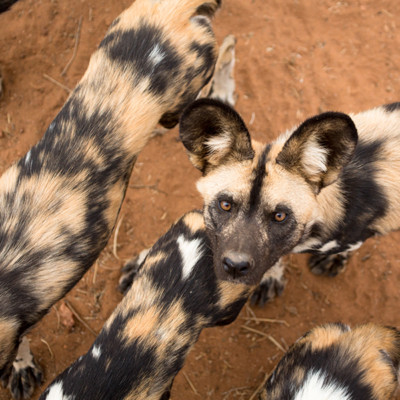The conscious emulation of nature
"“Sustainability must meet the needs of the present without compromising the ability of future generations to meet their own needs”.
United Nations.
To create sustainable designs, biomimicry emulates nature consciously. Learn from it, imitate its forms, processes and natural ecosystem
This creations are incorporated into disciplines so diverse such as design, engineering, business, economy, architecture and social system among others
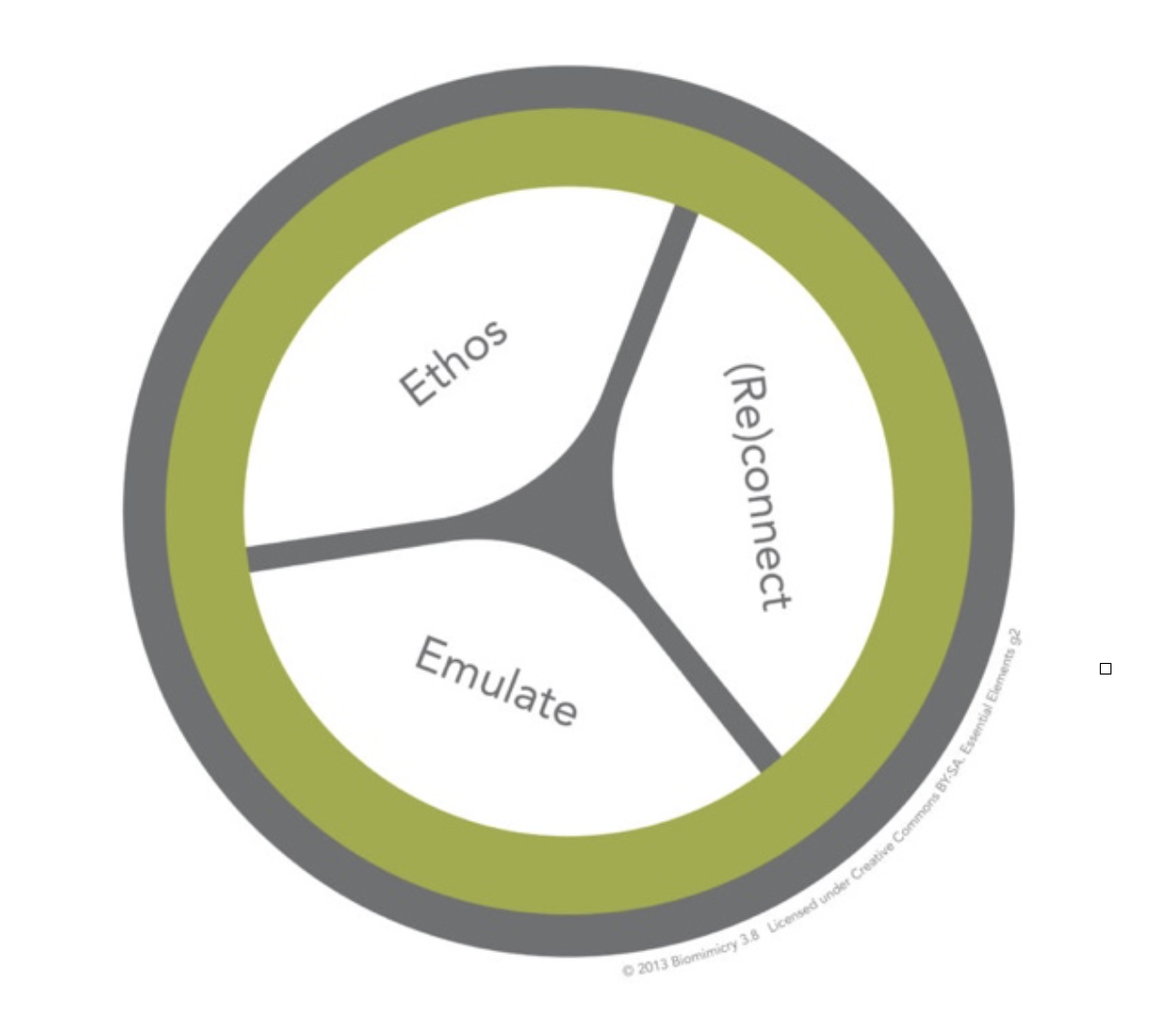
Credits : Biomimicry 3.8. Under license Creative Commons CC-BY-SA
3 fundamental elements
Biomimicry can only be understood through its elements and it is necessary that all of them are employed. To use it as a truly sustainable model we need a product design under an ethic that respects life and reconnect us with nature. Likewise, in its frequent known way, emulation allows the designer to emulate organism’s strategies to be successful under their surrounding context.
ETHOS
RECONNECTION
EMULATION
EXAMPLES
Several indigenous groups consider nature as part of their cosmology and vital organ for their development. A good example is given by the Khasis community in Meghalaya, India. Given unpredictable weather changes produced by monsoons, such as strong winds and rain during a season of the year, this population has opted from centuries ago to build communication routes that are produced from rubber fig tree’s roots. In harmony with surrounding nature, roots grow through guides set up by its dwellers, building bridges and roads that connect them between villages. These structures have been proven to be resilient, being capable of resisting extreme weather conditions.
Routes are used for bartering, commerce and are fundamental for students to local schools.
In this way, the community has been successful in respecting the environment without creating an exploitative relation with nature.
Fuente: Watson, J (2020). “Lo-TEK: Design by Radical Indigenism”
Practice with iSites, which are opportunities or experiences that reconnects us with nature. For example, consider a business model as an ecosystem. How would you operate a company the same way an ecosystem does?How would you translate the jargon that describes terms such as resources, systems, flows and functions to the company’s operations?
Fuente: Baumeister, D (2014) “Biomimicry resource Handbook”, iSites.
Butterfly wing’s microscopic structure repels water and causes dirty particles to be eliminated along with the repelled liquid. The company Shöeller Technologies® has created a fabric named Nanosphere® that is self-cleaning and abrasion resistant. It has a double advantage: Avoid the use of natural resources for its cleaning and eliminate the use of cleaners that employ harmful chemicals.
Source: https://www.schoeller-textiles.com/en/technologies/nanosphere
Forms, processes and systems
“The shape of the owl’s wing, the structure of the shark’s skin and the strong and flexible kelps show us incredible solutions to solve design problems”
What forms can be emulated?
Las largas orejas de algunos ratones, por su capacidad de emanar calor a través de sus vasos sanguíneos, se utilizan para regular la temperatura de una manera eficiente y sin usar metales de forma indiscriminada. En temperaturas bajas, los vasos de las orejas se vaso-dilatan y la sangre caliente del cuerpo incrementa su flujo hacia las orejas. Así, el calor es enviado al exterior, manteniendo la temperatura constante y regulando el sobrecalentamiento.
This nature’s form could be implemented in devices where heat exchange is necessary, from fins that cool microprocessors to cooling towers in large industrial plants.
““ From small bacteria to animals, every organism works through processes. Some of them are simple, like ingestion in microorganisms whereas in others are far more complex, such as the perfect coordination for organ development during a whale’s gestation.
What processes can we emulate?
Sunlight intensity concentrates plant proteins called hormones that are in charge of sending information to different parts of multicellular organisms. In response, the vegetal organism modifies its water levels prompting stalk bending towards the light source. This process is performed by hormones called auxins that increase their concentrations in regions with less light.
This design can bring us a mechanical solution to take advantage of solar and eolic sources. In consequence, it brings sustainable alternatives to part of the electric energy that still depends on fossil fuels.
What forms can be emulated?
The Australian Great Barrier reef, thanks to the use of emergency resources for areas under restoration, is an excellent example of resilience. The reef is home to more than 400 types of corals and other species, and has been strongly impacted by climate change, in particular cyclones, and invasive foreign species. One of the visible effects has been their loss of colour through a process called bleaching, by which corals die. When a disaster hits the coral, its neighbours called refugia have three interesting behaviours:
First, it has been shown that these neighboring reefs are less likely to be flooded by warm water currents that cause bleaching.
Likewise, it has been shown that they are sufficiently connected to each other through water movement during the spawning phase of some organisms. This allows coral larvae to travel and colonize devastated areas to refill them.


